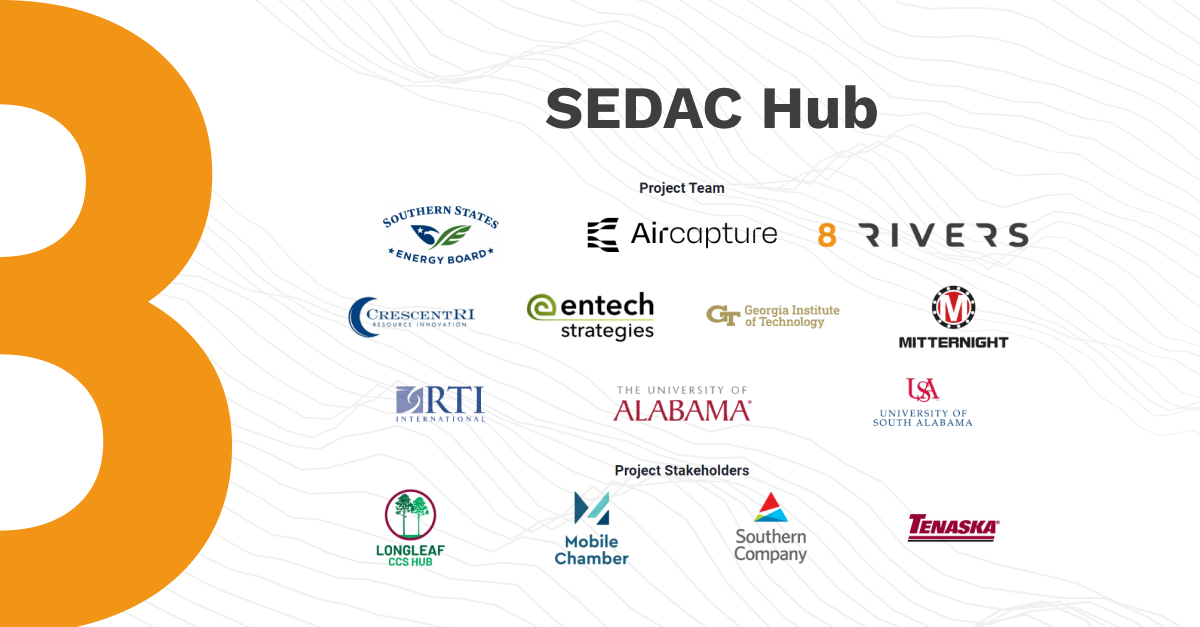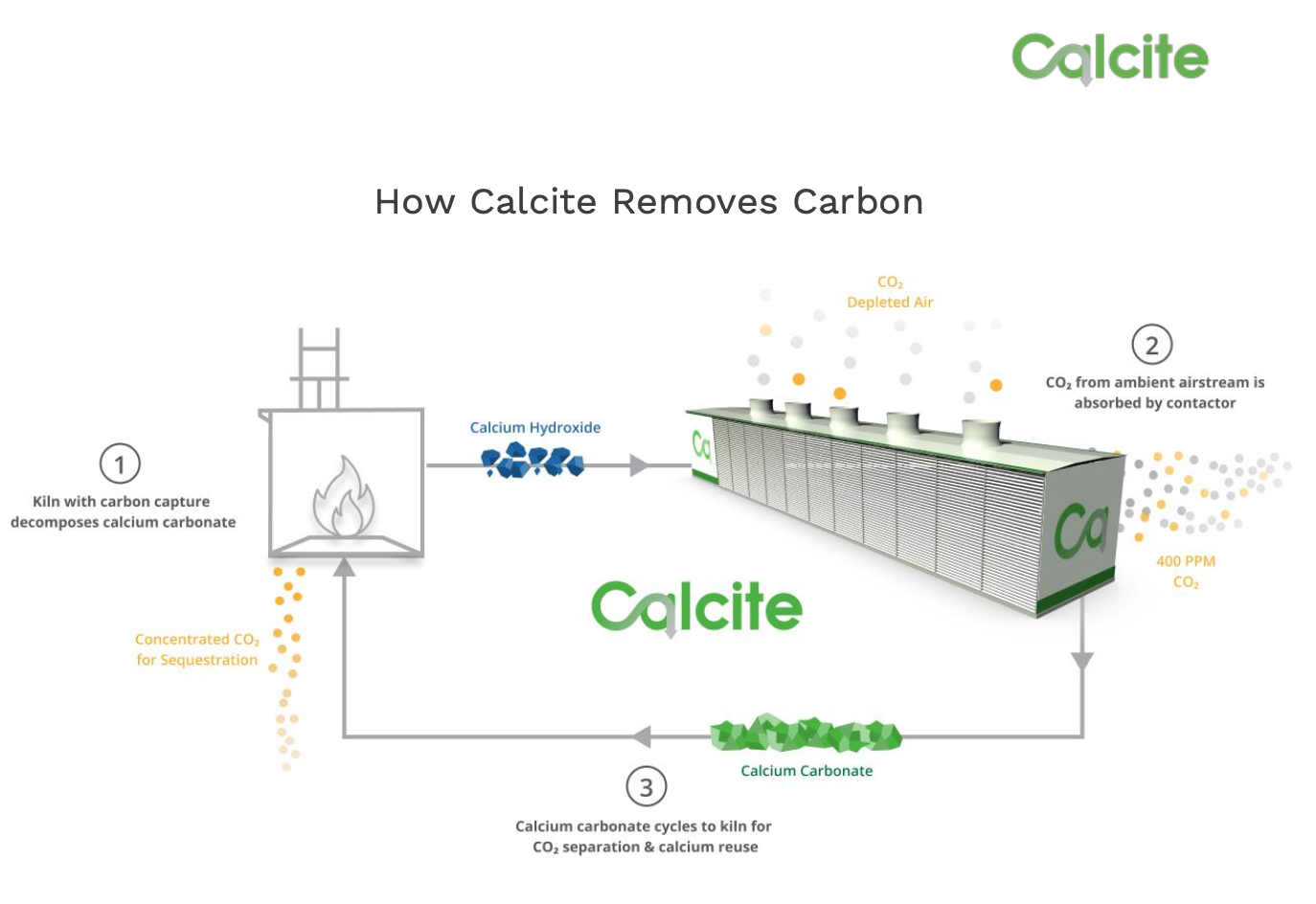That standout technology is direct air capture (DAC.) The International Energy Agency’s Net Zero by 2050 Scenario calls for DAC technologies to capture more than 85 million tons of CO2 in 2030 and ~980 million tons of CO2 in 2050.
At 8 Rivers, we are committed to scaling our own DAC technology, Calcite, to deliver the carbon removal that the world needs. We pride ourselves on Calcite’s efficiency, simplicity, and cost-effectiveness. Evidently, the DOE agrees: the Southeast DAC Hub (SEDAC), the prospective hub anchored by our Calcite technology, was selected as a recipient of their Direct Air Capture (DAC) Hub grant earlier this year.
Before we get into the details of Calcite, though, let’s look more into the rationale behind the Regional DAC Hubs Program and what the DOE seeks amongst the program’s candidates.
DOE Regional DAC Hubs: proof of concept, commercialization, global leadership
To advance its goal of achieving a net zero by 2050 in “a cost-effective, reliable, and efficient manner,” the United States has launched a Carbon Negative Shot to promote all forms of carbon removal. As part of that initiative, the Office of Clean Energy Demonstrations and the National Energy Technology Laboratories (NETL) are collaborating on the Regional Direct Air Capture (DAC) Hubs program.
The project has three main goals:
- Demonstrate DAC effectiveness
- Accelerate DAC commercialization
- Establish the US as a global DAC leader
On August 11, 2023, DOE announced what projects it selected to receive funding. Potential hubs could apply for funding at three stages of development: feasibility, design, and construction. DOE selected the SEDAC Hub as one of its design-stage winners. SEDAC, an Alabama hub anchored by 8 Rivers’ Calcite carbon removal technology, won funding for a Front End Engineering and Design (FEED) study to “establish and define technical requirements focused on project scope, schedule, and costs to reduce risk during later project phases.”
SEDAC: Bringing carbon removal to Alabama
Based in Mobile County, Alabama, SEDAC aims to capture 50,000 tons of CO2 per year upon completion. Anchored by Calcite, 8 Rivers’ award-winning carbon removal technology, SEDAC Hub will bring well-paying skilled jobs to the Gulf South region while reducing global atmospheric CO2.
8 Rivers is proud to partner with Southern States Energy Board, the project’s lead and project co-lead and site host, Alabama Power Company. We’re excited to collaborate with fellow project members Crescent Resource Innovation, ENTECH strategies, Georgia Tech, Mitternight, RTI International, the University of Alabama, and the University of South Alabama. We’re also grateful to our stakeholders, including Southern Company, Tenaska Sequestration Solutions, the Mobile Chamber of Commerce, and many others.
Calcite: Simple chemistry for cost-effective removal
The anchor tech of SEDAC, Calcite brings simplicity, efficiency, and cost-effectiveness to DAC technology.
How does it work?
Based on the Calcium cycle, it uses a calcium sorbent to capture CO2 directly from the air and sequester it safely underground. The proprietary Calcite process enhances the natural carbon absorbing properties of hydrated lime, reacting it with ambient air to form limestone. The limestone is then heated by an oxygen fired kiln, which separates the CO2 for sequestration and produces additional hydrated lime to be replaced into the system. With the potential to reach gigaton-scale removal, Calcite is poised to be a major contributor to the nation’s carbon management ecosystem.
In addition to this latest DOE support, Calcite also earned investment from the DOE Advanced Research Projects agency’s energy FLECCS program, a first-round Frontier carbon removal purchase, and $1M from the XPRIZE for carbon removal competition.
With Calcite-anchored SEDAC as one of the design-stage winners, 8 Rivers is thrilled to see our technology recognized and excited to move full speed ahead towards commercialization.
Interested in learning more about Calcite’s potential for simple, efficient, and cost-effective carbon removal? Check it out on our website or contact us to schedule a chat.


